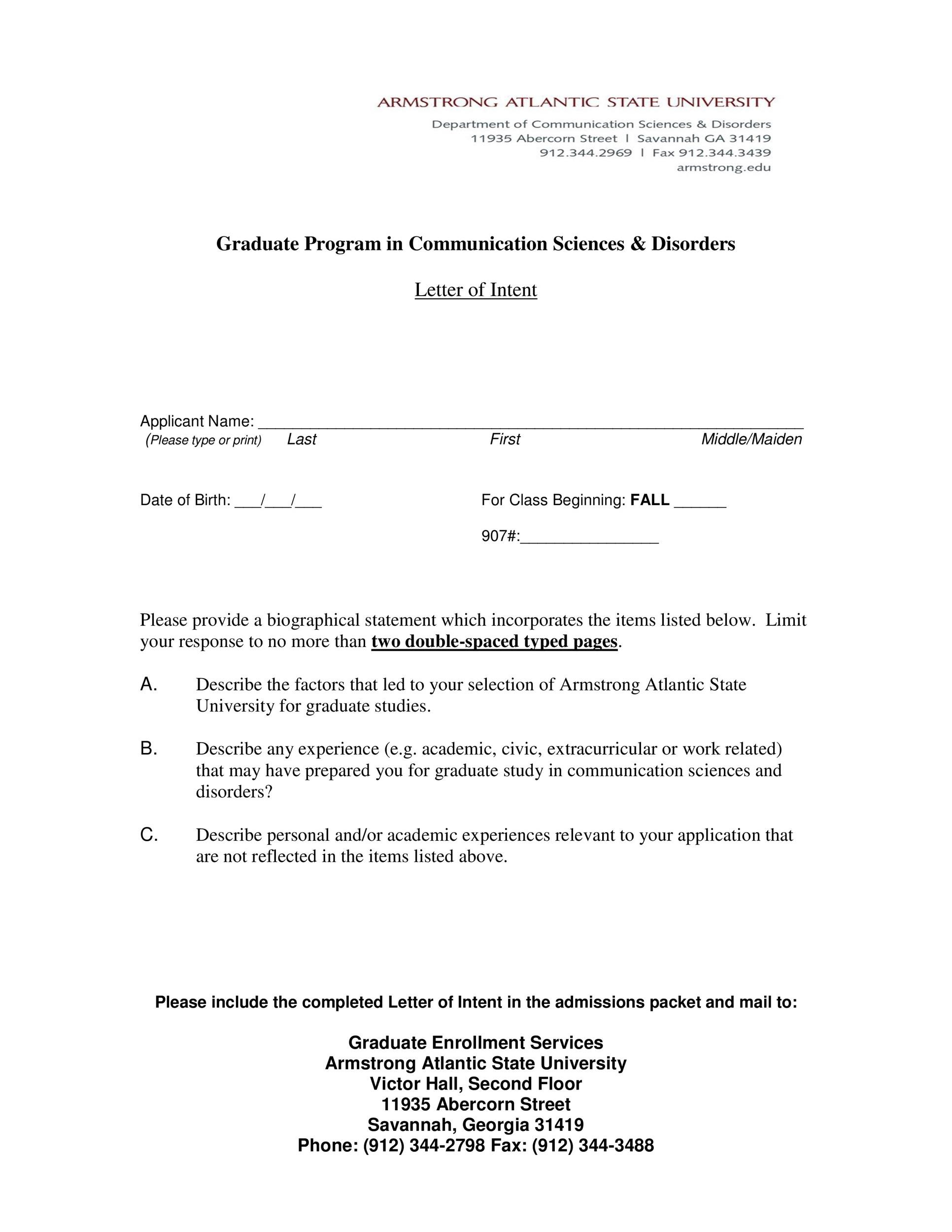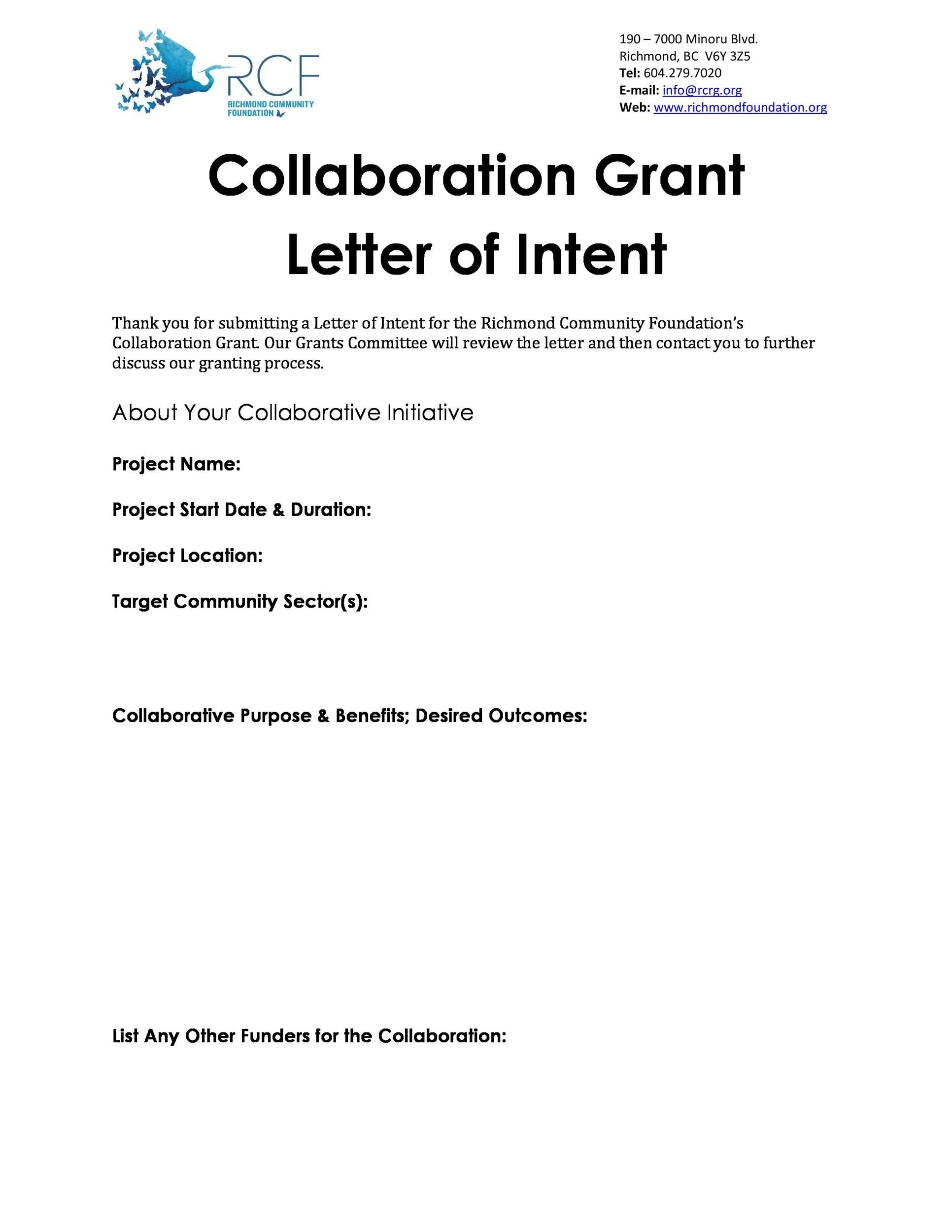

It’s best to avoid putting any negative information in your letter. If you’re currently employed and seeking work at another company, include your job title and why you are interested in the company you’re writing to. This section should include your name, a brief explanation of your current experience level and your reason for writing.įor example, if you are a recent graduate, include information about your degree and areas of study. Use the first one or two sentences of your letter to formally introduce yourself.
#Letter of intent professional
The letter of intent is designed to provide a positive and professional first impression that might lead to hiring opportunities. However, avoid being too familiar or informal with your greeting (“ Hey,” or by including only the addressee’s first name). While you might be able to find HR personnel to address your letter to, if you’re unsure, choose a more general greeting like “ Hello.” The greeting or salutation should be professional and follow formal greeting formats.įor example, you can use standard greetings, such as “ Dear Hiring Manager,” or direct the letter to a specific individual within the company. Let’s take a closer look at these elements and what information you should include in each.

While your letter of intent should be unique to your own set of skills, experiences and qualities, there are five main elements you should include in your letter: Introduction: Include your name, brief summary of your background and your reason for writing.īody: Include your qualification and achievements as it relates to your job.Ĭall to action: Politely express your interest in the position and the company with a specific action you want the reader to take. This provides the employer with an opportunity to see your value and interest in their company and might encourage the employer to assess whether the company has a need or role you can fill. The employer has jobs posted for other positions but also employs workers in your area of expertise or with your skills and experienceĪ letter of intent makes it easier to submit your resume to an employer even when there are no specific jobs in your specialty. You’ve heard or have been told that an employer is looking to hire, even if there are no jobs posted

You’re researching companies and find an employer who you believe best fits your interests and career goals You’re submitting resumes to employers at a job fair Cover Letter: Definitions, Tips and Examples When to use a letter of intent It can be sent at any time and may not result in clear next steps versus a cover letter which typically results in an interview and subsequent job offer. While you might submit a cover letter when applying for a posted position, a letter of intent is best when you want to show an employer you’re interested in working at their company, even if there are no job openings listed. Related: Letter of Interest: Definition, Tips and Examples How does a letter of intent differ from a cover letter? Instead, it is designed to express your interest in working at an organization, why you’re interested and what skills and experiences you have that the employer might find valuable. Although similar to a cover letter, an intent letter provides less detail related to a specific job. Typically, you would send a letter of intent to hiring managers or recruiters at a company that has not posted jobs relevant to your background. What is a letter of intent?Ī letter of intent is an introductory letter to employers you’re interested in working for. We also outline what a letter of intent should include with an example letter and tips. In this article, we explain what a letter of intent is, how it differs from a cover letter and when you should use one. This type of letter, also known as an intent letter or letter of interest, is focused on the company more than your skills. Much like a cover letter, a letter of intent is a general overview of your industry-specific skills and experience as well as the reasons you are interested in working for a specific employer.


 0 kommentar(er)
0 kommentar(er)
